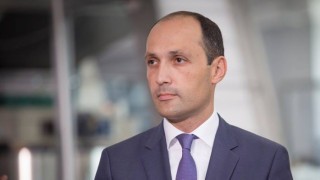Levan Davitashvili: “A total of 385,000 jobs have been created over the past three years.”
Verdict: FactCheck concludes that Levan Davitashvili’s statement is FALSE.
The statement refers to employment growth by comparing it to the pandemic period when job losses were particularly severe and employment levels fell to their lowest point in the past decade. Not only is such a comparison manipulative, but the figure cited by Levan Davitashvili is far from accurate even within that context.
The number of employed persons increased by 185,000 in 2024 as compared to 2021, according to GeoStat – not 385,000. Moreover, this increase amounts to just 106,600 if we use 2019, the pre-pandemic year as a more appropriate baseline. The total increase amounts to 190,300 in 2024 as compared to 2012 – thus, the total increase over the 12-year period of the Georgian Dream’s governance is still much below than the claimed figure.
Therefore, not only is Levan Davitashvili’s comparison manipulative, but the number he cited is factually incorrect. Considering the above, FactCheck concludes that Levan Davitashvili’s statement is FALSE.
Analysis
During his appearance on Ghamis Kurieri (Night Courier), Ministry of Economy and Sustainable Development, Levan Davitashvili stated: “Only through employment can we achieve an improvement in the standard of living and we are making progress here. A total of 385,000 jobs have been created over the past three years – this is official information.”
First, it is important to clarify that Levan Davitashvili uses 2021 as a baseline – a time when employment rates declined sharply due to the pandemic and the subsequent economic restrictions. Notably, 2021 recorded the lowest employment rate of the past decade (2015-2024). Using this year as a comparison is manipulative and inflates the current employment figures. However, the 385,000 jobs claimed by the minister still does not align with the data even with the aforementioned context.
The actual increase in the number of employed individuals as compared to 2021 is 185,000, according to GeoStat’s 2024 data – not the presented 385,000. Moreover, the total increase in employment has only amounted to 190,300 even during the 12-year period of the Georgian Dream’s governance.
When comparing the 2024 employment figures to those of the pre-pandemic year of 2019, there is an increase of 106,600 employed people, including a rise of 62,900 hired workers and 43,600 self-employed individuals. Additionally, the employment rate (the percentage of employed individuals within the working-age (15+) population) – grew from 42.7% to 47.1%. Whilst this increase in employment is the main factor behind the higher employment rate, the decline in the population aged 15+ also contributed to the overall trajectory.
Looking at the broader trend, 2020-2021 marked a sharp decline in employment rates due to strict and prolonged economic restrictions imposed during the pandemic. Employment rates began to improve significantly in 2022, although they had not fully recovered to the pre-pandemic levels. However, 2023 and 2024 marked substantial improvements in employment as illustrated in Graph 1:
Graph 1: Number of Employed Individuals and Employment Rate (2015-2024)
Source: National Statistics Office in Georgia
The rise in employment in 2022-2024 can be attributed to several factors. Firstly, the end of the pandemic and the lifting of related economic restrictions led to the restoration of jobs lost during the pandemic. Moreover, new jobs were created across both the private and public sectors. Furthermore, the employment programme for socially vulnerable individuals, which was launched in the spring of 2022, also contributed to the growth in employment to a certain extent. The objective of the programme is to encourage the employment of socially vulnerable, employable individuals, primarily through artificially created public jobs with a salary of GEL 300. It is important to view the aforementioned programme not as a genuine employment initiative, but as a social programme funded by the state budget, resulting in a rise in employment statistics.
Thus, comparing employment figures to a period impacted by the pandemic when a certain number of people were unable to work due to economic restrictions is manipulative and overstates the current growth in employment. Moreover, the figure cited by Levan Davitashvili – 385,000 – is far from accurate even within that context. Considering the above, FactCheck concludes that Levan Davitashvili’s statement is FALSE.








